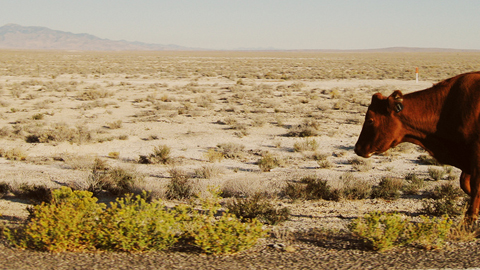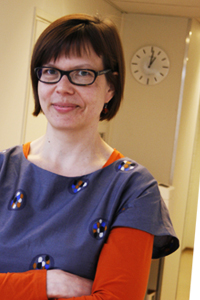When Food Changed the World
Will paying extreme attention to what we eat and having the possibility to choose a personally tailored diet fit in the same world with conflicts caused by hunger?

Our possibilities to produce and consume food will become ever more limited in the future. Climate change, globalisation, population growth, and technological development are all dynamics which have far-reaching, worldwide consequences.
Let’s have a look at the ones caused by extreme weather phenomena, for example. Our food production is water intensive. This means that the best farming areas are found in the geographical areas rich in water. There are predictions saying that many of these areas ‒ now situated in the Mediterranean and south of the equator ‒ will suffer from floods, hurricanes, or drying as the climate change evolves. Production of food will move elsewhere.
What Happens When Hunger Grows?
Riikka Saarimaa studies the future of food at the Finland Futures Research Centre at the University of Turku. She presents two possible scenarios of what will happen when the production of food moves to new areas.
‒ We here in the North might benefit if things take this turn. When producing food becomes more difficult elsewhere, the food industry could prosper here.
The second outlook is far more alarming.
‒ Enormous population growth is a reality in the areas facing deteriorating circumstances to produce food. Will it be possible to secure the availability of food in these areas? We are already in a situation where there is overproduction somewhere and hunger elsewhere, simultaneously.
According to Saarimaa, this could be a reality in just some decades. She ponders what will happen when the hunger grows – will there be more wars and hunger refugees?
‒ I think we will see more conflicts if ensuring food security becomes an issue. Crises might lead to tighter surveillance at the borders while defending acquired benefits.
Trends and Anti-trends
While the future of food is polarising, people in welfare states pay more attention to eating than ever before. Consumption of food has become more individualised: people express their identities by the choices they make in eating.
‒ There is a lot of talking about food. Social media offers new ways to discuss food, and it is a strong tool for having an influence, too – boycott campaigns being a good example.
Saarimaa believes that food-related phenomena will continue to go to extremes.
‒ There are people very aware of the choices they make, but also people who don’t have the information or the possibility – or even an interest as an anti-trend for all the health education – to make healthy choices. This can be seen in the consumption of red meat, for example. According to what is trendy here right now, we could assume the consumption is decreasing. However, on a global level it is increasing due to the westernizing of Asian culture.
The Association of Food and Well-being is Visible Again
 Trends come and go, but at least one of these phenomena makes Riikka Saarimaa happy: the association of food and well-being is visible again.
Trends come and go, but at least one of these phenomena makes Riikka Saarimaa happy: the association of food and well-being is visible again.
‒ This is an old yet a new thing. Researchers and nutritionists have been going on about how what we eat – and how much – affects our well-being. If we team this awareness with the latest research, it can be possible for a doctor or a nutritionist to suggest a diet based on an individual’s gene map, which can, for example, delay a certain disease to break out.
The issues dealt in this article, among many others, will be observed at the University of Turku on the 6th and 7th of June, 2013 at “Futures for Food”, an international conference organised by the Finnish Futures Research Centre, Finland Futures Academy, and MTT Agrifood Research Finland.
Text. Taru Suhonen
Photographs:quinn.anya, My Eye6